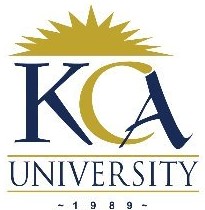 UNIVERSITY EXAMINATIONS: 2012/2013
UNIVERSITY EXAMINATIONS: 2012/2013
THIRD YEAR EXAMINATION FOR THE BACHELOR OF
SCIENCE IN INFORMATION TECHNOLOGY
BIT 4301 ADVANCED OPERATING SYSTEM
DATE: DECEMBER, 2012 TIME: 2 HOURS
INSTRUCTIONS: Answer Question ONE and any other TWO
QUESTION ONE
a) What are the three main purposes of an operating system? [6 Marks]
b) How does the distinction between kernel mode and user mode function as a
rudimentary form of protection (security) system? [4 Marks]
c) What are the five major activities of an operating system in regard to process
management? [5 Marks]
d) Palm OS provides no means of concurrent processing. Discuss three major
complications that concurrent processing adds to an operating system. [6 Marks]
e) What are the three major activities of an operating system in regard to memory
management? [3 Marks]
f) Computer system can be divided into four components. State and explain the
components [6 Marks]
QUESTION TWO
a) What are the three major activities of an operating system in regard to secondarystorage management? [6 Marks]
b) List five services provided by an operating system. Explain how each provides
convenience to the users. Explain also in which cases it would be impossible for userlevel programs to provide these services [10 Marks]
c) What is the purpose of system calls? [4 Marks]
QUESTION THREE
a) List three examples of deadlocks that are not related to a computer system
environment. [3 Marks]
b) Name two differences between logical and physical addresses. [4 Marks]
c) Using a well-labelled diagram, distinguish between the user-mode and kernel mode
indicating various elements for the same. [13 Marks]
QUESTION FOUR
a) Explain the main advantages of the microkernel approach to operating system design?
[3 Marks]
b) Explain the differences between block devices and character devices. [3 Marks]
c) How could a system be designed to allow a choice of operating systems to boot from?
What would the bootstrap program need to do? [4 Marks]
d) Explain any FIVE design considerations in the design of distributed operating
systems. [10 Marks]
QUESTION FIVE
a) In the design of a kernel, explain why it is necessary to specify the kernel space and
user space. [4 Marks]
b) There are several decisions during the design and implementation of a kernel. Explain
any three important decisions. [6 Marks]
c) Distinguish between a multitasking operating system and a single-tasking operating
system. [2 Marks]
d) In KMOS system, explain the SEND operation and RECEIVE operation as used in
KMOS interprocess communication and synchronization. Race condition
[4 Marks]
e) Explain the four Linux Synchronization techniques used in process cooperation.
[4 Marks]